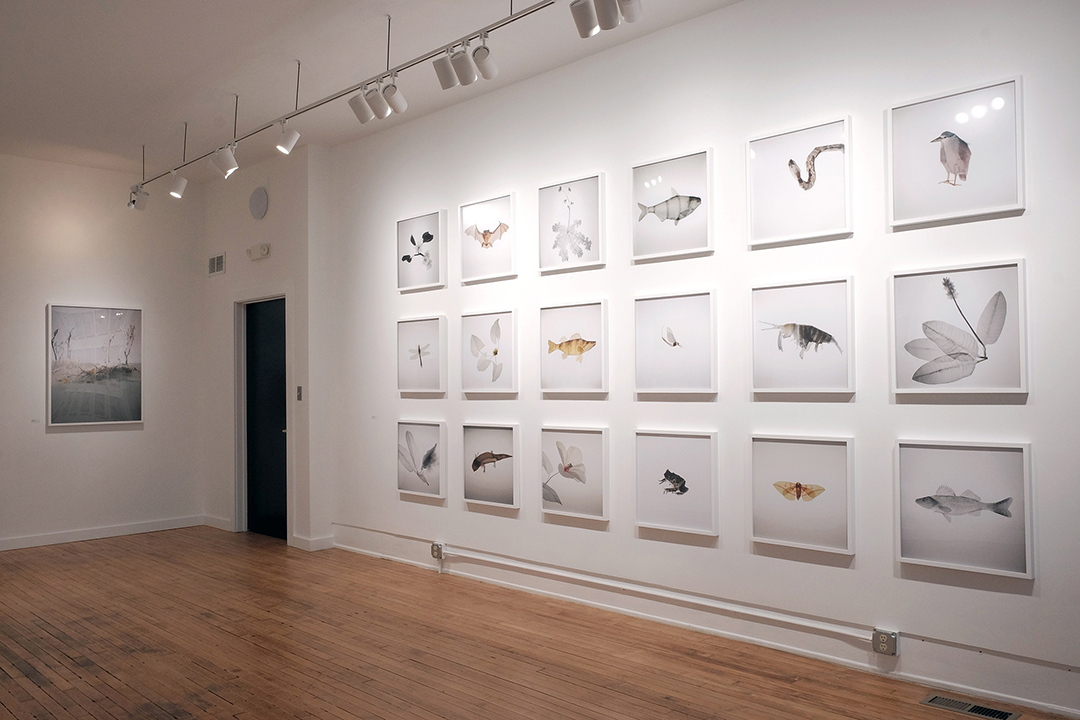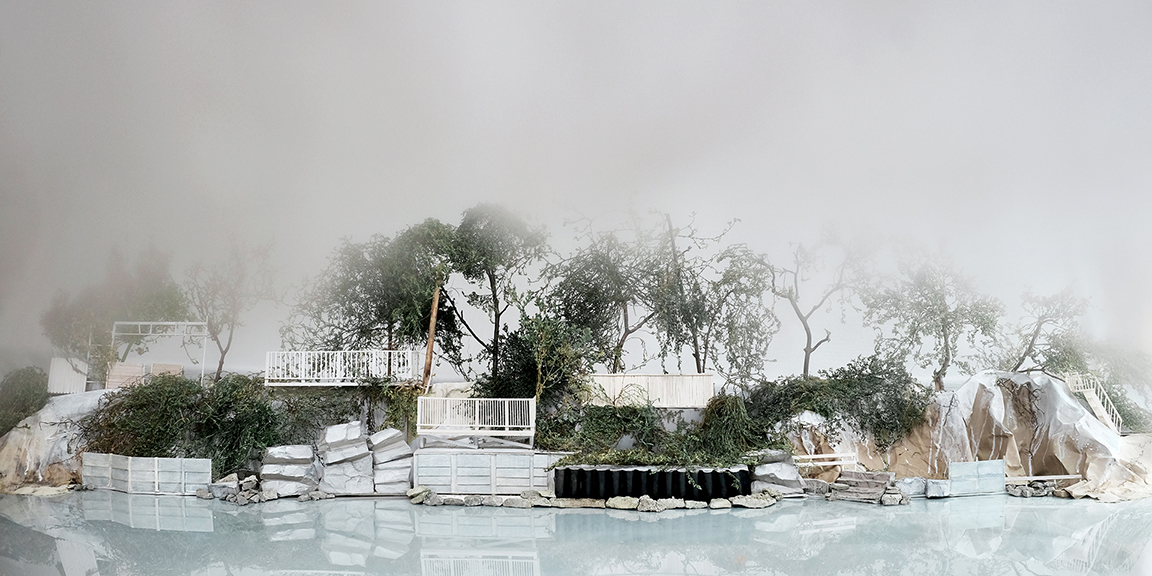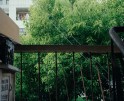Lori Kella: Vanishing Shoreline, Shifting Ground
Today we are looking at work that was submitted during our most recent call-for-entries. I am excited to share the conversation Lori Kella and I had while discussing her project, Vanishing Shoreline.
Lori Kella was born in St. Joseph Michigan in 1974. She received a BFA from the Cleveland Institute of Art, and her MFA from Cornell University. Kella’s photography explores the complexity of the 21st century landscape by crafting elaborate fictions meant only for the camera’s lens. Her newest series titled Vanishing Shoreline examines climate change along the Great Lakes. Solo exhibitions of this artwork have been featured at PhotoCentric in Cleveland, and at the Rosewood Art Center in Kettering, OH. Photographs from this series were also featured in State of the Art 2020 at the Crystal Bridges Museum of American Art and the Sarasota Art Museum. Lori Kella has exhibited in other prestigious venues such as The Cleveland Museum of Art, the Akron Art Museum, Galerie Drei and the Rathuas in Dresden Germany, The Print Center in Philadelphia, Site: Brooklyn in NY, MOCA Cleveland, Artspace in Raleigh, NC, Filter Photo in Chicago, IL, and William Busta Gallery in Cleveland, OH. She has received four OAC Individual Fellowships Awards, a full fellowship to attend Vermont Studio Center, a Creative Workforce Fellowship, and funding from ArtPlace America and the Andy Warhol Foundation. Lori Kella lives on the shore of Lake Erie in Cleveland, OH and is a faculty member at Laurel School in Shaker Heights, OH.
Vanishing Shoreline
As a native of the Great Lakes, I have returned my gaze toward our inland seas, examining the fragility and resilience of this complex ecosystem. The resulting body of work, Vanishing Shoreline, reimagines the shoreline of Lake Erie and its tributaries in a visual homage to a horizon that has captivated me for three decades. The artificial landscapes, created from paper, painted plastic, and translucent glycerin, record observations of different species nestled into the landscape; and the resulting photographs hint at the ephemeral nature of these environments while preserving them as an imperfect record that ponders both absence and rediscovery. Coupled with these grand panoramas are translucent photographic replicas of native specimens essential to the area. This catalogue of species becomes a visual archive of what may disappear; and these ephemeral portraits offer contemplation on what may be, or is already lost, suggesting that paper replicas may eventually be our only reference to the once grand Great Lakes. Together these photographic works investigate the realm of loss in the face of pervasive environmental threats, while also offering a moment of reflection and a renewed discovery of the natural world.
Daniel George: You’re from the Great Lakes region, and you mention that you’ve been captivated by Lake Erie for over three decades. What is it about the lake in particular that led you to initiate this project?
Lori Kella: I grew up along Lake Michigan, and it was a prevalent feature of the landscape, one I probably took for granted as a kid. Water and the Great Lakes as a theme would permeate my artwork from time to time, but in 2018 I reconnected with this landscape and began the series Erie Lost and Found.
My husband and I live on a tiny street that ends at the edge of Lake Erie. Living so close to the lake gives us the luxury of seeing it every day. Like any large body of water, it can be placid and still or turbulent and chaotic, and the shoreline inevitably shifts with the seasons and the lake levels. However, in 2018 the natural freeze and thaw cycle of the lake was disrupted. I became fascinated with this shift, so I started to examine the lake ecosystem and to use these observations in my artwork.
DG: You write that, for the viewer, your photographs offer “a moment of reflection and renewed discovery of the natural world.” Despite having spent your life near the lakes, is there anything that you learned throughout the process of making this work? Any new insights or appreciation?
LK: To make this body of work, I spent a lot of time kayaking along the shore of the lake and venturing into the small tributaries, where I quietly observed the activities of countless creatures. I became a more careful observer of wildlife, as the kayak gave me a new vantage point and a way to get close to the aquatic life in the estuaries. Many of my photographs are attempting to preserve the small details that I witnessed, such as beavers carrying willow branches to their dams, or turtles patiently sunning on logs. To me, the photographs are hazy vignettes and imperfect recollections of these encounters, for the moments were sometimes fleeting. There was also a realization that these moments may be disappearing forever. In many ways that is why we take pictures, to remember a moment that will never exist again in the same way. And of course I am fully aware of the irony, that I’m not always taking pictures of these observations as they happen, that instead I am recreating them in my studio to capture the essence of the encounter and to recreate something fleeting and momentary so that I can have a more permanent and more perfect image.
DG: While looking at your images, and considering their desaturated quality, it brought to my mind roadside memorials—such as white crosses or bicycles. In a way, these photographs function to preserve memory of what was lost, or will be lost, if negative trends continue. Would you speak more to this idea of using your photographs to pay homage to Lake Erie and its tributaries?
LK: I deliberately chose to create desaturated images to allude to the fact that these are fragmented recollections of a specific instance, and also to alert the viewer to the fact that these places may fade from our view over time and the ecosystems may vanish and become simply a faded photograph in the archives somewhere.
The photographs are impartial vignettes, with only small sections fully rendered, which speaks to how we process visual information, only paying attention to the central elements in the landscape. In some ways the work is a paradox, as the faded palette and partially rendered compositions prevent the viewer from fully seeing the scene as is was, but the photograph itself, frozen in time becomes a permanent record.
DG: With both this project and others on your website, you construct landscapes and scenes out of various materials—creating dioramas that allude to the natural world. Could you talk about this process, and why you are drawn to represent the environment in this manner?
LK: Though I haven’t always worked by creating dioramas I have always been drawn to constructing or staging the photograph. I think initially, in art school, the stories I wanted to tell didn’t seem to exist in front of me in a way that I could just document; so staging became an obvious answer to creating new realities in the photograph. Even twenty-five years later this still holds true. By creating or recreating the landscape in my studio I can shift the reality in front of me. Sometimes it is just to heighten the experience of being in a place and more accurately capture the essence of the moment more succinctly. Other times recreating a scene allows me to shift time and hint at the future or what lies just over the horizon. For me it is often about storytelling, and reimaging the scene lets me control or reshape the narrative. Of course, working in the studio also offers a freedom from the conventions of landscape, as I can toy with the laws of nature. In my latest series “Shifting Ground” the hillside and shoreline are quite literally being torn apart. These images shift vantage points and defy gravity in order to convey the dynamic nature of the cliffs that are falling onto the lake. Creating this image would simply not be possible with documentary style photography.
DG: On the topic of photographic representation and allusion, how do you feel that your “elaborate fictions” augment and/or contradict our understanding of the natural world?
LK: I may have touched on this in the previous questions, but for me reimaging or recreating the landscape, allows me to capture the essence of being in place, which is often different that the documentation of that place. Hopefully in doing this the audience connects with the work emotionally as well. But as an artist, working the studio it is also about pushing the boundaries of landscape, and seeing how I can make an image that is simultaneously read as a landscape and also strangely different than anything one has seen before. My work teeters between the familiar and the unreal, and both of these elements are essential for the photograph to work. In the studio I love the challenge of seeing how far I can abstract the landscape or reduce it, or how I can play with perspective or mix elements that are flat with three dimensional ones. To me, this is an act of seeing and observing, and I’m always delighted when viewers can simultaneous ponder the beauty and the strangeness of these landscapes as well as grapple with the notions of photographic truth.
Shifting Ground
A continuation of the Vanishing Shoreline series, this new collection focuses on the dramatic coastal erosion that has intensified as storms increase and protections for the shoreline vanish. The photographs in this series show a deconstructed terrain of fallen trees and sliding cliffs, as well as an expanse of vines, foliage, and overgrowth seen only from the lake itself. The images depict the precarious balance of nature and infrastructure in our battle with the climate crisis. The beautiful, haunting, unmoored photographs become a metaphor for the ferocity of nature and our inability to halt its progress in a changing world.
Posts on Lenscratch may not be reproduced without the permission of the Lenscratch staff and the photographer.
Recommended
-
Earth Month Photographers on Photographers: Josh Hobson in Conversation with Kes EfstathiouApril 19th, 2024
-
Earth Month Photographers on Photographers: Leonor Jurado in Conversation with Jessica HaysApril 18th, 2024
-
Ruotong Guan: Falling. Slowly. but,April 13th, 2024
-
Seth Adam Cook: As Big As The SkyApril 12th, 2024
-
Michael Borowski: AzurestApril 11th, 2024































































